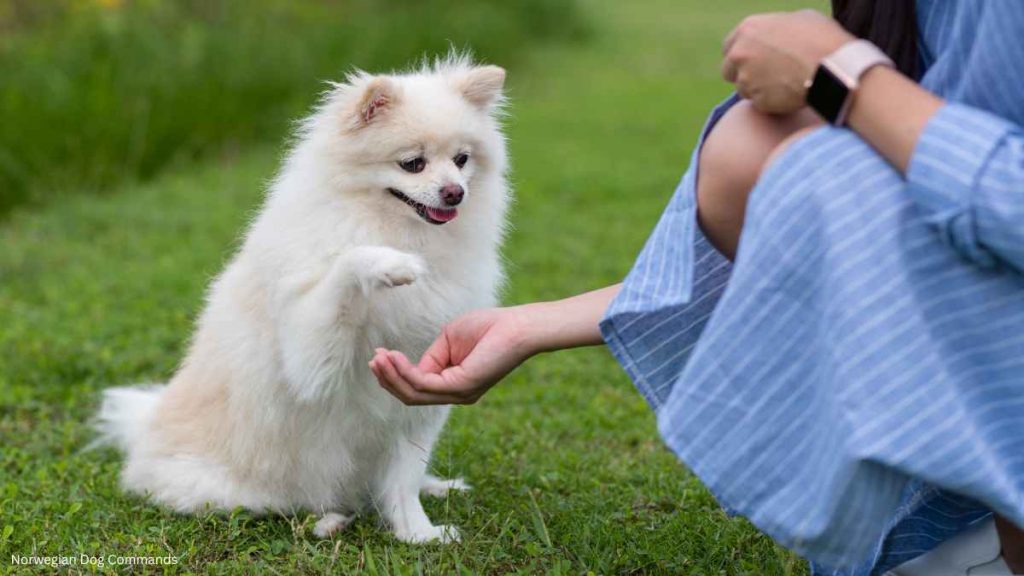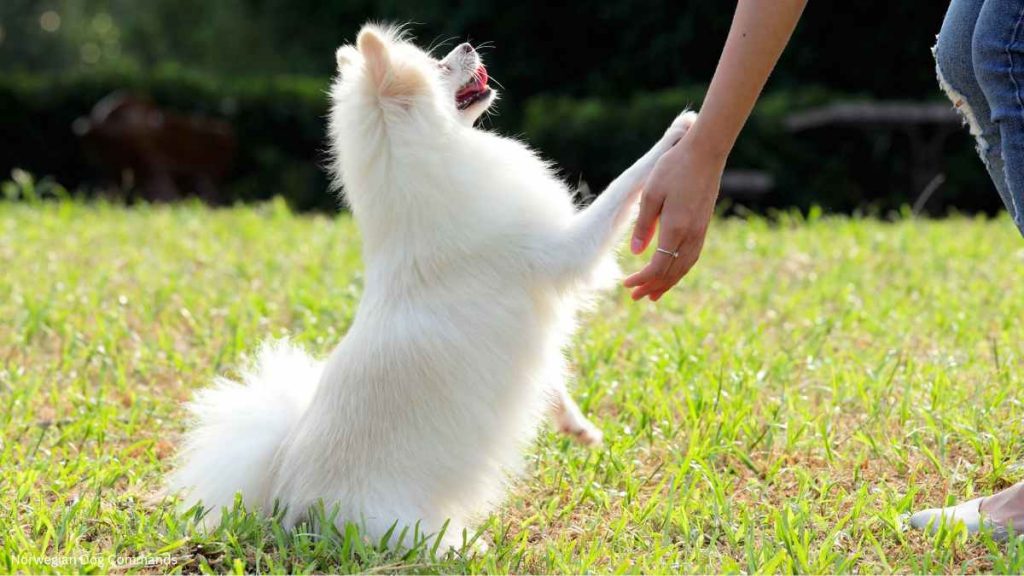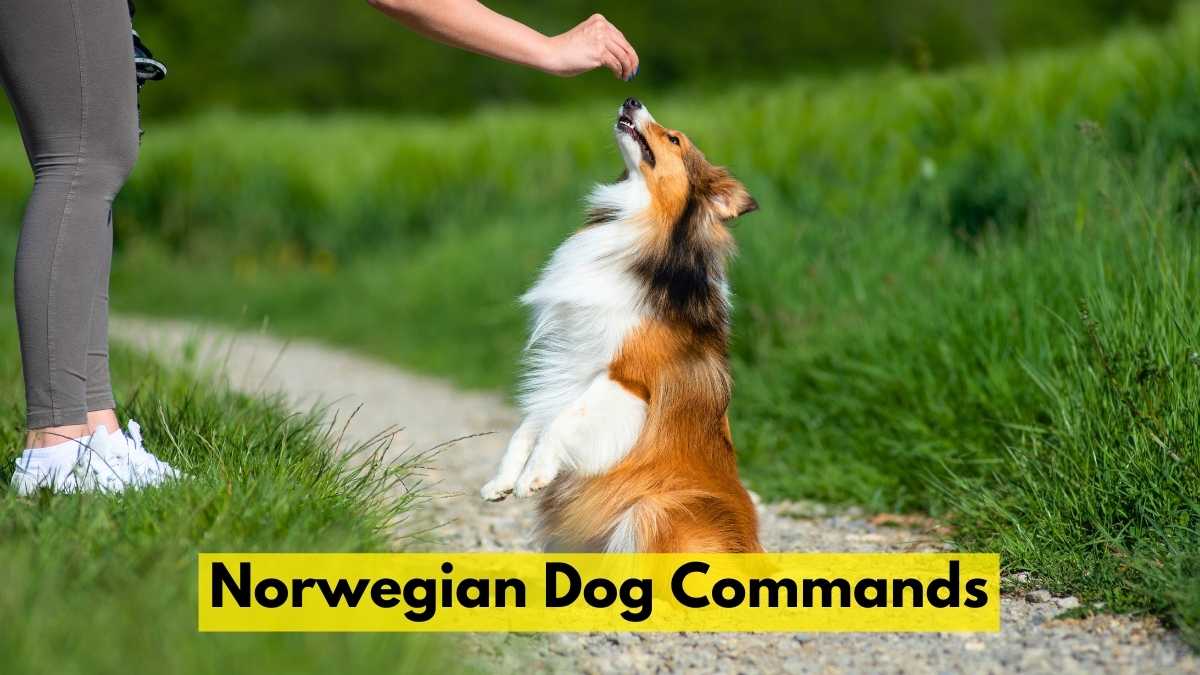Dog training is an essential aspect of responsible pet ownership, fostering a harmonious relationship between dogs and their human companions. Whether you’re a seasoned dog owner or a first-timer, mastering effective training techniques is crucial for a well-behaved and happy pup. Among the various training methods available, utilizing Norwegian dog commands can be a game-changer.
In this article, we delve into the significance of dog training, emphasizing the unique benefits of employing Norwegian dog commands. With a clear and structured outline, we’ll explore the fundamental commands and their application, along with advanced techniques for more complex interactions. By embracing this training approach, you’ll witness the remarkable transformation of your canine friend into an obedient and well-mannered companion. Let’s embark on this rewarding journey of canine communication and understanding.
Table of Contents
Basic Norwegian Dog Commands
A. Sit – “Sitt”
Teaching your dog to sit on command is one of the foundational skills in dog training. The Norwegian command for this action is “Sitt.” To begin, hold a treat close to your dog’s nose, then slowly move your hand upward. As your dog follows the treat, their bottom will naturally lower into a sitting position. Once they are seated, say “Sitt” firmly and immediately offer the treat as a reward. Practice this command regularly, gradually reducing the need for treats as your dog becomes more consistent in responding to the verbal cue.
B. Stay – “Bli”
The “Bli” command is used to instruct your dog to remain in a particular position until released. This is essential for ensuring your dog’s safety and preventing them from running into dangerous situations. Begin by asking your dog to sit or lie down, then show your open palm toward them, and say “Bli” in a clear and steady voice. Take a step back while maintaining eye contact. If your dog stays in place, reward them with praise and treats. Increase the duration gradually to improve their impulse control and ability to hold the position.
C. Come – “Kom”
The recall command, “Kom,” is vital for your dog’s safety and is used to call them back to you. Start in a distraction-free environment, crouch down, and say “Kom” while patting your thighs to encourage your dog to come to you. When they do, reward them generously with treats and praise. It’s crucial to make coming to you a positive experience, as it will strengthen the recall behavior. Gradually practice “Kom” in different settings and increase the distance between you and your dog.
D. Down – “Ligg”
Teaching your dog to lie down on command is beneficial for situations that require calm behavior, such as when guests visit or during walks. To teach “Ligg,” have your dog in a sitting position, hold a treat close to their nose, and lower it to the ground between their paws. As they follow the treat, their body will naturally assume a lying down position. Once they are down, say “Ligg” and reward them promptly. Repeat this process consistently to reinforce the command.
E. Heel (Walk on a leash) – “Følg” or “Ved fot”
“Heel” is used to train your dog to walk politely on a leash without pulling. In Norwegian, you can use “Følg” or “Ved fot” for this command. Start with your dog on your preferred side, and with a treat in your hand, hold it close to your leg. As your dog walks beside you, say “Følg” or “Ved fot” and reward them frequently for staying in the desired position. If they start to pull, stop walking and wait for them to return to your side before continuing. Consistency and patience are key to mastering this command.
By diligently practicing these basic Norwegian dog commands, you’ll establish a solid foundation for more advanced training and foster a strong bond with your canine companion based on trust, respect, and effective communication. Remember to keep training sessions positive, rewarding, and enjoyable for your furry friend.

Positive Reinforcement Training Techniques
A. Reward-based Training
Reward-based training is a highly effective and humane method of teaching dogs new behaviors or commands. The core principle is to reward desired actions with treats, praise, or other positive stimuli. When your dog performs the desired behavior correctly, immediately offer a reward, reinforcing the association between the action and the positive outcome. This approach encourages your dog to repeat the behavior in anticipation of the reward. Through consistent and positive reinforcement, your dog will be more motivated to learn and engage in training sessions willingly.
B. Using Treats and Praise
Treats and praise are powerful tools in positive reinforcement training. When teaching a new command or reinforcing an existing one, use small, tasty treats that your dog finds appealing. Offer the treat immediately after your dog performs the desired behavior, accompanied by verbal praise, such as “Good boy/girl!” or “Well done!” The combination of edible rewards and verbal encouragement enhances your dog’s learning experience and strengthens the bond between you. Over time, you can gradually reduce the frequency of treats as your dog becomes proficient in responding to verbal cues and praise.
C. Clicker Training
Clicker training is a popular technique that employs a small handheld device called a clicker. The clicker emits a distinct sound when pressed, signaling to your dog that they have done something correctly and that a reward is forthcoming. This precise and instantaneous feedback helps to reinforce the desired behavior more effectively. To begin clicker training, associate the sound of the clicker with rewards by clicking and then immediately offering a treat. Once your dog makes the connection, use the clicker to mark and reinforce behaviors as they happen. Clicker training can be particularly useful for shaping complex behaviors and fine-tuning your dog’s responses to commands.
Norwegian Dog Command Phrases for Socialization and Interaction
A. No – “Nei”
“No” is a crucial command in any dog’s training repertoire. In Norwegian, it is simply “Nei.” Use a firm and clear tone when giving this command to indicate to your dog that their current behavior is not acceptable. Whether they are about to do something unsafe or undesirable, using “Nei” consistently will help your dog understand when to stop and redirect their actions.
B. Yes – “Ja”
“Yes” or “Ja” in Norwegian is an affirmative word used to mark desired behaviors. It is an important part of positive reinforcement training, as it lets your dog know they have done something right. Combine “Ja” with treats and enthusiastic praise to reinforce positive actions and encourage your dog to repeat them.
C. Good boy/girl – “God gutt/jente”
Using positive reinforcement is essential for building a strong bond with your dog. In Norwegian, you can say “God gutt” for a male dog and “God jente” for a female dog. Offering verbal affirmations such as “Good boy” or “Good girl” in their native language lets your dog know they have pleased you, fostering a positive and happy environment during training and everyday interactions.
D. Leave it – “La det ligge”
“Leave it” is a vital safety command, especially when your dog is tempted to pick up something potentially harmful or unsuitable. In Norwegian, you can use “La det ligge” to instruct your dog to leave the object alone. Practice this command with treats initially, offering a more enticing treat when your dog successfully ignores the undesirable item.
E. Wait – “Vent”
“Wait” is used to ask your dog to pause momentarily and not move forward. Whether you’re about to open a door, cross a road, or encounter any situation where you need your dog to hold still, the command “Vent” comes in handy. Use a steady tone and hand signal to reinforce the command, and reward your dog for waiting patiently.
By incorporating these Norwegian dog command phrases into your training routine, you’ll facilitate better socialization and interactions with your canine companion. Consistency and positive reinforcement will help your dog understand and respond appropriately to these cues, ensuring a well-behaved and well-adjusted furry friend in various situations. Remember to be patient and encouraging as you work together to strengthen your communication and understanding.
Advanced Norwegian Dog Commands
A. Fetch – “Apport”
“Apport” is the Norwegian command for teaching your dog to fetch objects and bring them back to you. Start with a favorite toy or ball and encourage your dog to take it in their mouth. Use the command “Apport” as they pick it up and then beckon them back to you. When your dog returns with the item, reward them with praise and playtime. Repeat the exercise regularly to reinforce this fun and engaging command.
B. Speak – “Snakk”
“Snakk” is the command to encourage your dog to bark or speak on cue. It can be helpful in specific situations or as part of more advanced training exercises. Begin by finding a trigger that excites your dog to bark naturally. Once they bark, say “Snakk” and reward them immediately. Gradually associate the command with the action until your dog starts barking in response to the verbal cue alone.
C. Quiet – “Stille”
“Stille” is the counter-command to “Snakk.” Use it to teach your dog to stop barking when told. When your dog starts barking, say “Stille” in a calm yet firm tone. Wait for a brief pause in their barking, even for just a second, and reward them with treats and praise. With consistent practice, your dog will learn to respond to “Stille” and stop barking when prompted.
D. Off (to stop jumping) – “Bort”
Jumping on people can be an unwanted behavior in dogs. The Norwegian command “Bort” can be used to teach your dog to stop jumping on you or others. Whenever your dog attempts to jump, say “Bort” and gently turn away from them, withholding attention. As soon as your dog has all four paws on the ground, offer praise and affection. This process will teach your dog that jumping leads to a loss of attention while staying calm and grounded results in positive reinforcement.
E. Stand – “Stå”
“Stå” is the command used to ask your dog to stand on all four legs. It can be beneficial for grooming sessions or veterinary visits. Begin by having your dog in a sitting or standing position, then say “Stå” as you gently guide them into a standing posture using a treat or your hand. Reward your dog for standing and gradually extend the duration they remain in this position.
With these advanced Norwegian dog commands, you can elevate your dog’s training to new heights, showcasing their intelligence and responsiveness. Be patient and consistent during training, and use positive reinforcement to encourage your dog’s learning and cooperation. Advanced commands not only impress others but also foster a deeper connection between you and your furry companion, making your journey together even more enjoyable and fulfilling.
Training Tips and Techniques
A. Consistency and Patience
Consistency is key to successful dog training. Use the same commands and cues each time you want your dog to perform a specific behavior. Be patient and understand that learning takes time. Dogs may not grasp commands instantly, so avoid getting frustrated and keep practicing with a positive attitude. Celebrate small victories and progress, rewarding your dog’s efforts to build their confidence and motivation to continue learning.
B. Short and Positive Training Sessions
Keep training sessions short and engaging. Dogs have a limited attention span, so aim for sessions that last around 10-15 minutes. Focus on one command per session and conclude on a positive note with a reward for your dog’s efforts. Short, frequent sessions throughout the day will yield better results than long, exhaustive ones, and they prevent your dog from getting bored or overwhelmed.
C. Body Language and Tone of Voice
Dogs are highly attuned to body language and tone of voice. Use clear and consistent hand signals alongside verbal commands to enhance communication. Maintain an upbeat and encouraging tone when your dog responds correctly, and avoid shouting or becoming angry when they make mistakes. Positive reinforcement works best when you convey happiness and approval through your body language and voice.
D. Avoiding Punishment-based Training
Avoid punishment-based training techniques, as they can harm the trust and bond between you and your dog. Physical or verbal punishment may lead to fear or aggression and hinder the learning process. Instead, focus on positive reinforcement, rewarding desired behaviors with treats, praise, or playtime. Redirect your dog’s attention away from undesirable actions and reward them when they respond to the correct commands.
E. Regular Socialization and Exposure
Socialization is vital for a well-adjusted and confident dog. Expose your dog to various people, animals, environments, and situations from an early age. Controlled and positive interactions will help them develop better behavior around strangers, other dogs, and novel stimuli. Gradually introduce them to new experiences, ensuring their safety and comfort throughout the process.
By employing these training tips and techniques, you can create a positive and effective learning environment for your furry companion. Consistency, patience, and positive reinforcement will lead to a well-behaved, happy, and responsive dog. Remember to cherish the training journey as an opportunity to strengthen your bond and understanding with your beloved canine friend.

Troubleshooting Common Training Issues
A. Non-responsiveness
If your dog is not responding to commands, it might be due to various reasons. Ensure that you are using a clear and consistent tone when giving commands. Check for any health issues that could be affecting your dog’s ability to hear or move comfortably. Review the training environment for any potential distractions or stressors that might be hindering their focus. Additionally, consider if the training sessions are too long or repetitive, which might lead to disinterest. Break the commands into smaller steps, use higher-value treats, and offer plenty of praise when your dog follows even the slightest cue correctly.
B. Distractions
Distractions during training can challenge your dog’s focus. To address this, gradually introduce distractions in a controlled manner. Start training in a quiet environment and gradually add more stimuli over time. For instance, practice commands indoors first, then move to a fenced yard, and finally to a park with more distractions. Use treats and praise as rewards for maintaining focus amidst distractions. Remember to be patient and understand that it may take time for your dog to become comfortable and responsive in distracting situations.
C. Leash Pulling
Leash pulling is a common issue during walks. Instead of pulling back on the leash, which might encourage your dog to pull even harder, try the “stop-and-go” method. When your dog pulls, stop walking and stand still until the leash loosens. Once they return to your side, reward them with treats and continue walking. Consistency is essential in teaching loose leash walking. You can also use positive reinforcement by rewarding your dog for walking beside you calmly. Avoid using choke or prong collars, as they can cause discomfort and are not conducive to positive training.
D. Excessive Barking
Excessive barking can be a result of various factors, such as boredom, anxiety, or territorial behavior. First, address any underlying issues by ensuring your dog has enough mental and physical stimulation through regular exercise and playtime. Use commands like “Quiet” (or “Stille” in Norwegian) to teach your dog to stop barking on cue. Reward them when they respond appropriately. Additionally, identify the triggers causing excessive barking and work on desensitizing your dog to those stimuli through controlled exposure and positive reinforcement.
Remember that troubleshooting training issues requires patience, understanding, and a willingness to adapt your approach. Seek professional help from a certified dog trainer or behaviorist if you encounter persistent challenges. With consistent training, positive reinforcement, and a loving approach, you can overcome common training issues and build a strong and trusting relationship with your furry companion.
Conclusion
A. Summary of Norwegian Dog Commands
In this article, we explored a comprehensive array of Norwegian dog commands designed to enhance communication and understanding between you and your canine companion. From basic commands like “Sitt” (Sit) and “Kom” (Come) to more advanced ones like “Apport” (Fetch) and “Stå” (Stand), each command serves a specific purpose in shaping your dog’s behavior and fostering positive interactions. Embracing these commands empowers you to create a well-behaved, happy, and responsive dog, enriching your relationship and daily interactions with your furry friend.
B. Encouragement for Ongoing Training
Dog training is a continuous journey of learning and growth. As you progress in teaching your dog these commands, remember to remain patient and consistent in your approach. Training should be a positive and enjoyable experience for both you and your dog. Continue to use reward-based techniques, treats, praise, and playtime to reinforce desired behaviors. Embrace short and engaging training sessions, always ending on a positive note, to keep your dog motivated and excited to learn.
C. Bonding with Your Dog through Training
Beyond obedience, training provides an excellent opportunity for bonding and strengthening the relationship with your dog. As you spend quality time together during training, you’ll develop a deeper understanding of each other’s cues and body language. This shared language fosters trust and respect, laying the foundation for a strong and lifelong companionship. Training allows you to connect with your dog on a more profound level, nurturing a loving and mutually beneficial relationship.
In conclusion, mastering Norwegian dog commands and employing positive reinforcement techniques not only shapes your dog into a well-behaved and attentive companion but also enhances the bond and communication between you and your furry friend. As you continue on this rewarding training journey, remember to celebrate every small achievement, embrace patience and consistency, and cherish the moments of growth and connection with your beloved canine companion. Together, you’ll forge a beautiful partnership built on trust, love, and understanding.
You May Also Like:
Top 10 Basic Puppy Training Commands Every New Dog Owner Should Know
The Bubble Theory Dog Training: A Comprehensive Guide for Dog Owners

